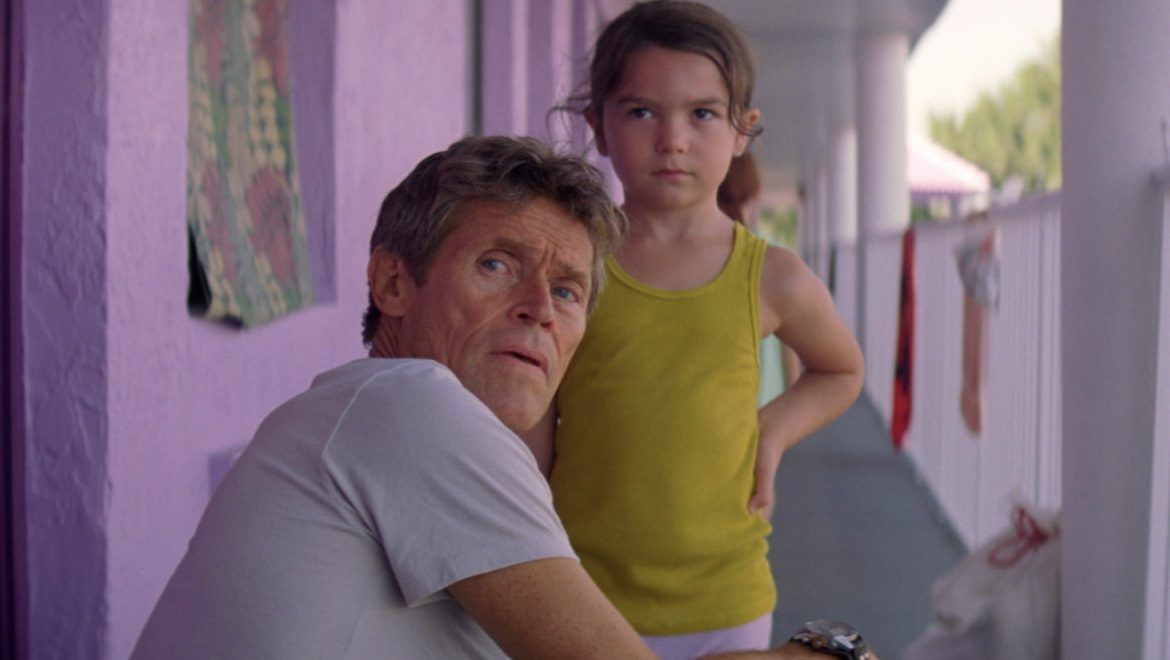
Each year the nominations for the Academy Award for Best Picture are announced and invariably each year people decry the exclusions. This list will do this very thing, for it’s easy to feel justified in saying that The Florida Project (2017) should have earned a nomination for Sunday’s ceremony.
Sean Baker’s wonderful, enlightening drama is his fifth feature film and his best yet, and continues his honest attempts to illuminate lives less explored. It follows a six-year-old girl, named Moonee, who lives with her naive mother, Halley, in a rusting motel in Kissimmee, Florida, not far from Disneyworld. They exist on the poverty line, and Baker aims to show life like this from the insular perspective of a young child.
The result is enthralling, emotive, and entirely timely; in a time of great divide in America, The Florida Project feels like a wonderful thing. It’s another great success for independent company A24 and they would have been right in believing that the film was capable of following their own Moonlight with a Best Picture nod, but the Academy instead chose more traditional fare like Steven Spielberg’s The Post and biopic Darkest Hour.
Important and excellent choices were made in Get Out and Lady Bird, but Baker’s film was deserving of a place in the nine-strong list on its own merits. Following are 5 of the reasons why The Florida Project should have received a Best Picture nomination.
1. New Acting Discovery
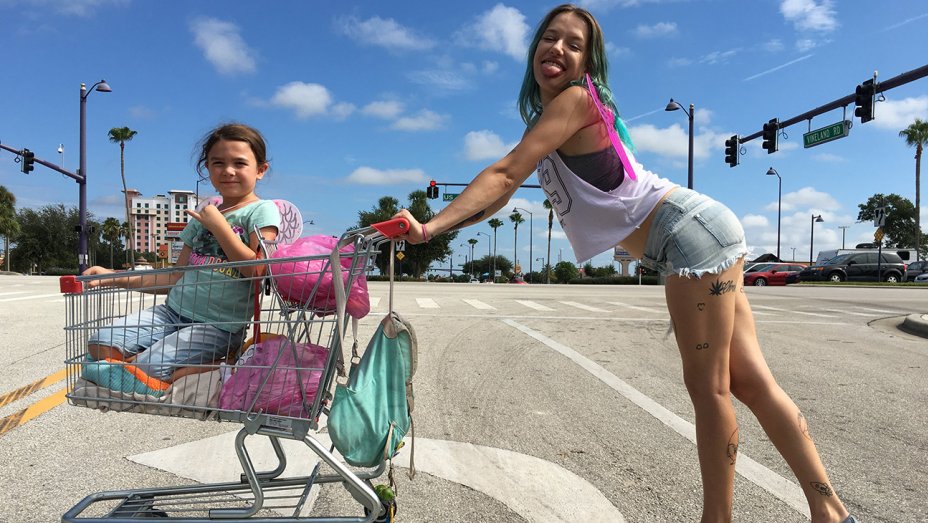
Just as he did in all of his previous features, Baker found amateur talent to fill his film. This time, the link was, surprisingly, Instagram: Bria Vinaite was a presence on the social media site, posting pictures of herself and documenting her life, when Baker discovered her profile and was immediately smitten. She was picked for the role of Halley, Moonee’s mother, against the wishes of the studio (who wanted Britney Spears or Miley Cyrus), at Baker’s insistence. Her subsequent performance completely belied her inexperience as she distilled life in the character of Halley.
In many ways, there were similarities between the two, as both were young, struggling to survive (at least before the exposure granted from the film to Vinaite), both trying to make it in a lonely world. Vinaite never went to college – presumably like Halley – and left home at 18 to develop her own career, which led to her starting her own clothing line, called ChroniCal, which sells weed-themed designs, a year later. Indeed, we even see Halley taking several pictures of her and her daughter, most likely for Instagram, mirroring Vinaite before the role.
This lent real-life experience to the role for her; she could understand Halley’s struggles, even if just on a small scale, for they were both hustlers, of their own type. It’s intriguing to consider the future possibility for acting talent to be found on Instagram, for in many ways it could function as an instant, virtual casting session for Hollywood.
The industry is obsessed with beauty and attractiveness, of course, of which there are many on the site, but there are also vibrant, vivacious, fascinating types like Vinaite, whose ability otherwise would never have been found. It’s reasonable to conclude that there will be many more out there like her, and it could be an avenue of discovery that Baker may be a trailblazer for.
Little Brooklynn Prince was perhaps an even bigger discovery, and her in the central role of Moonee will go down as one of the best child actor performances, perhaps only rivaled in this century by Quvenzhane Wallis in Beasts of the Southern Wild (2012).
Putting a 6-year-old at the front of a film is always a risky endeavour but Prince carries it supremely well, and it never feels like Baker had to forcing emotions from her. She’s a captivating bundle of joy and excitement, and nothing less than riveting whenever she’s onscreen (which is most of the running time).
There’s a key scene towards the climax of the film, in which the Florida Department of Children and Families are attempting to remove Moonee from her mother, when the connection shared between the two feels so natural and raw and real that it’s testament to the acting ability of Prince and Vinaite. We see Moonee go from happy to confused to angered to distraught, as she begins to comprehend the awful circumstances.
Master filmmakers like Robert Bresson have found success using amateur actors and Baker appears to be a filmmaker capable of unearthing talent from anywhere and pulling marvellous performances from within them. Vinaite and Prince were unknowns at the start of filming but shouldn’t be any longer.
2. The Florida Setting
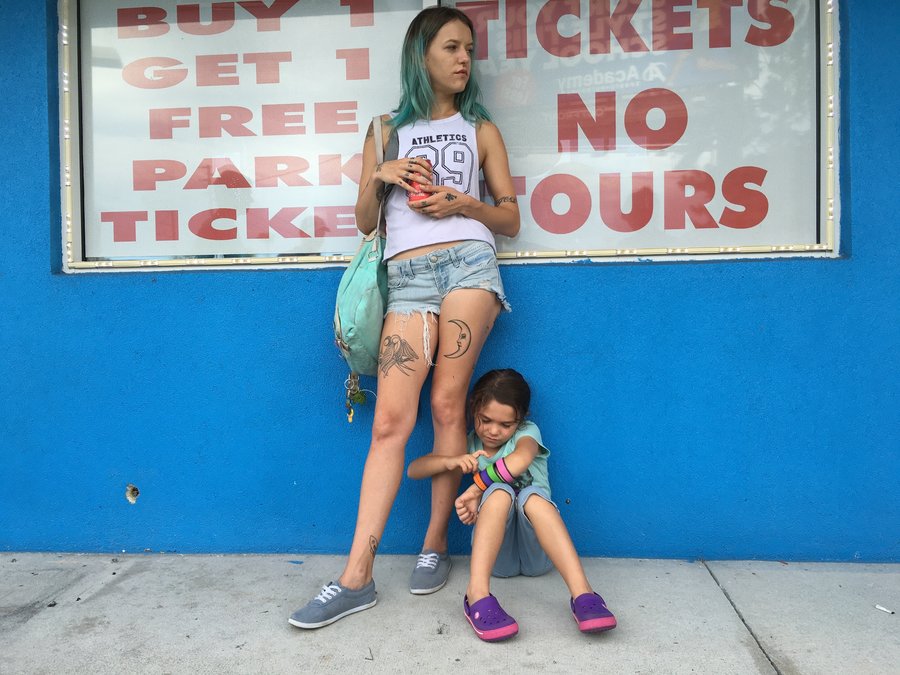
Baker’s films occupy the Other, spaces in familiar locations which we are simultaneously unfamiliar with. Consider Baker’s Tangerine (2015): most of the action takes place only a few blocks from the centre of Hollywood and its glamour and attraction, but in this unheralded area there is only poverty and problems.
The title of the film curiously comes from a failed venture by Walt Disney himself, when he envisioned turning this part of Central Florida into a dream location but it never materialised, a melancholic hew on the film’s reality. Baker and his writing partner Chris Bergoch (Bergoch himself had experience of Orlando-Kissimmee and his mother lives there), went into the area, met the locals and talked to motel residents and social services, to gain an understanding of life here and to imagine the film’s narrative.
It must be said that Baker is never on some poverty-porn excursion, leering at those struggling; rather, he does it out of genuine care, and a passionate need to get these stories into the wider world. So Moonee, like an estimated thousand just like her, lives within view of Disneyworld’s majesty and fireworks displays, but truly she’s a world away.
It’s an increasingly common way of life in Florida, with many school children heading home from class to a small motel room. In these places, people just struggle to afford to survive, living on the margins in the shadow of money. It’s explicitly shown in a melancholic scene when Halley and Moonee must move out of the motel for one night because they’re forbidden from staying more than 30 days at a time; they are far closer to living on the street than affording a trip to the paradise theme park so close to them.
It’s clear that these are the people left behind by society and those in power. It’s a disruptive technique by Baker, forcing his viewer to face up to the reality of these places. As any naive child would, Moonee and her friends create their own wonderland, and the Other becomes just as magical as Disneyworld through their eyes. They play in the tall grass, and this becomes a wild jungle. They explore an abandoned rental as if it’s a haunted house attraction. They use their imagination to escape their circumstances, something the adults just cannot achieve as wholly.
The motels are remarkably coloured, in reflection of the real Disneyworld, and have names like the ‘Magic Castle’; in one comical interlude, a honeymooning young couple from Brazil arrive unexpectedly at the motel after the husband’s friend booked the wrong location for their trip. The Other is a space, clearly, of fine margins.
3. The Camerawork
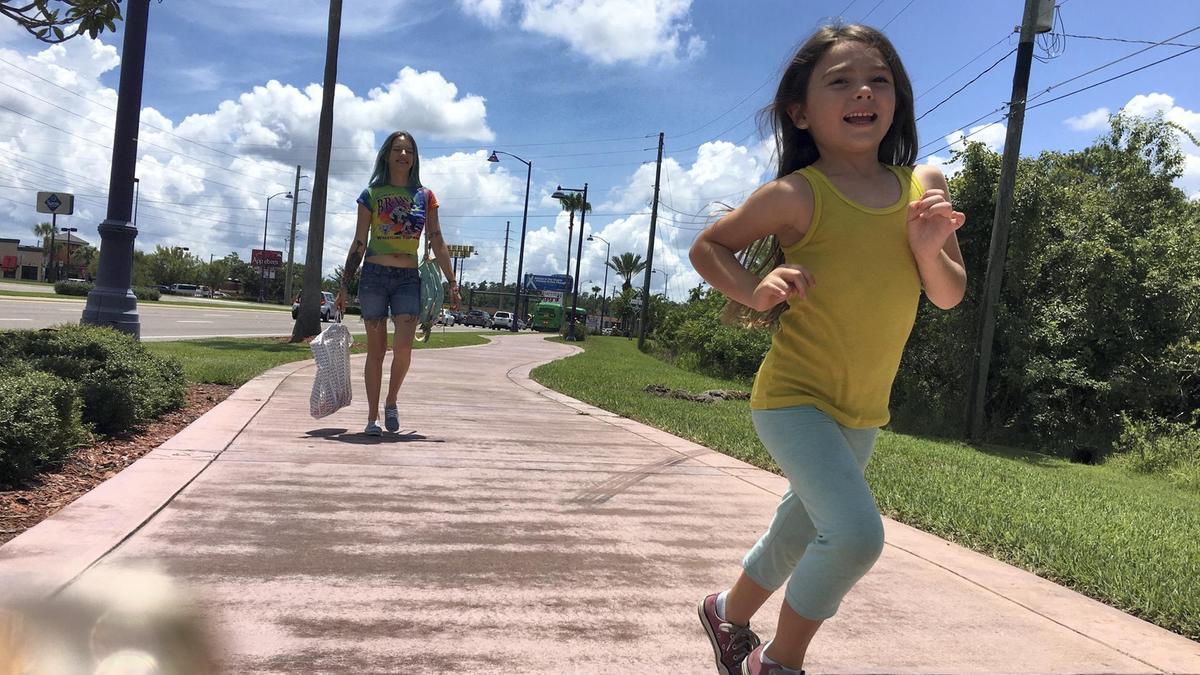
Baker has frequently cited the Dardenne brothers as idols and their influence is all over this picture, especially in the camerawork. Baker uses hand-held cameras to follow his actors, often from behind and at shoulder level, giving a documentary feel to proceedings.
An excellent choice is having the camera at Moonee’s level, even when adults are talking; it reinforces that this is her film, exploration through a child’s experience. He also knows when to train his camera on faces, like to capture the pain of Moonee’s realisation that she may never see her best friend again, or the weariness in Bobby’s eyes as he quietly smokes a cigarette at the end of another busy day.
The stunning cinematography comes from Alexis Zabe, known for his transcendent work in Carlos Reygadas’ films, but he also shot music videos, and the resulting feel of The Florida Project is a merging of these two distinct styles; it’s a widescreen arthouse picture instilled with a poppy, vibrant colour-palette. Baker lets his camera settle on the colourful buildings of the strip, from the bright orange of a supermarket, to the dazzling pink of the ‘Magic Castle’.
The film, then, is subtly beautiful, with the myriad of colours at once contrasting and working with each other. The camerawork is resolutely shot in this way until the final scene, when Baker switches to a kinetic, frenetic style as Moonee and her best friend finally escape to the real Disneyworld together.
This was partly a functional choice, as he chose to revert back to an iPhone so as to shoot discreetly inside the Disneyworld grounds, but it works on a stylistic level, mirroring the children’s sense of adventure and escapism.
4. Willem Dafoe’s Comeback
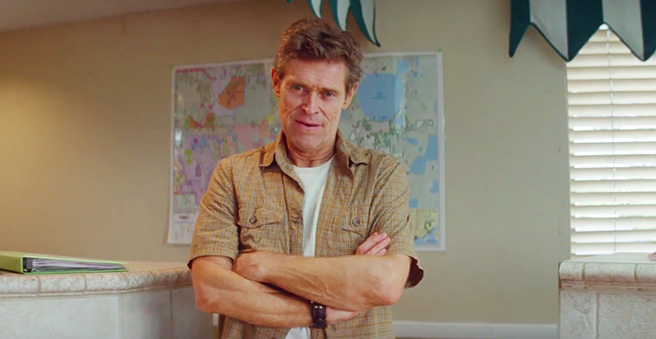
Dafoe was the only real ‘name’ in the whole cast, and the threat would have been there for him to dominate the film, especially considering his well-known persona; Dafoe has a face that would provoke instant screams from a new-born baby. But he gives his best performance in years, a performance of real naturalism and pathos.
As Bobby Hicks, the manager of the ‘Magic Castle’, he’s responsible not only for the upkeep of his motel but often also for the wellbeing of his poorly residents. He’s constantly harassed, forever busy, but still finds pockets of time to devote to Moonee and her friends. Bobby is deceptively warm and kind, and in this contrast lies Dafoe’s nuanced performance. He talked to people who held similar jobs to his character to gain a measure of such a life, and he’s said that what touched him was the pride they held in their work.
This knowledge is clearly something Dafoe included in his performance, as we know that Bobby genuinely cares for the residents of his motel, particularly the young children like Moonee. He deservedly received a Best Supporting Actor nomination, his third in total, but seems likely to lose out to overwhelming favourite Sam Rockwell for Three Billboards Outside Ebbing, Missouri. Dafoe can, however, take solace in the immensity of his performance, one against type, one that will be admired for years to come.
5. Humanism And Social Realism Themes
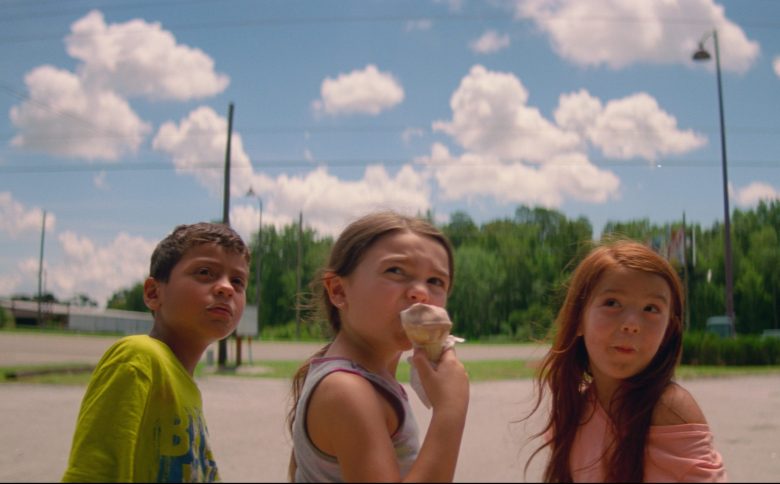
Baker is a pure humanist, a much needed voice in American filmmaking right now. His films are steeped also in social realism without being too heavy. Nothing is overly-politicized, for one, with the focus importantly on the inner lives of the people in the stories, not their circumstances. It’s what separates him from the Dardenne brothers: they care only on the ailments of European society and the people are secondary to that, but Baker’s films can also easily be defined as tales of friendship.
Just like the buzzing rapport that forms Tangerine between Alexandra and Sin-Dee, The Florida Project is, aside from the poverty and struggle, about real friendship. We see it in the children playing with each other happily, making the most of their existence, but we also see it between Moonee and her mother; Halley is, after all, just a child herself still and the bond they share is caring yet playful, nurturing yet fun. But Baker does make sure that the issues of his American portraits are known, and the critiques hit.
Each film makes us keenly aware of the class and economic divide existing in the country today. The juxtaposition of the magic of Disneyworld, the so-called happiest place on earth, with the raw poverty in dingy motels along congested highways is a painful one but a needed one. Moonee and Halley are amongst the poor excluded by society, and who aren’t noticed enough in mainstream cinema.
That last scene is testament to the director’s humanism, too, as he offers Moonee – and us – a temporary escape from her current problems. It may be a flight of fantasy, it may be in the imagination of the girl, but Baker includes it to offer hope.